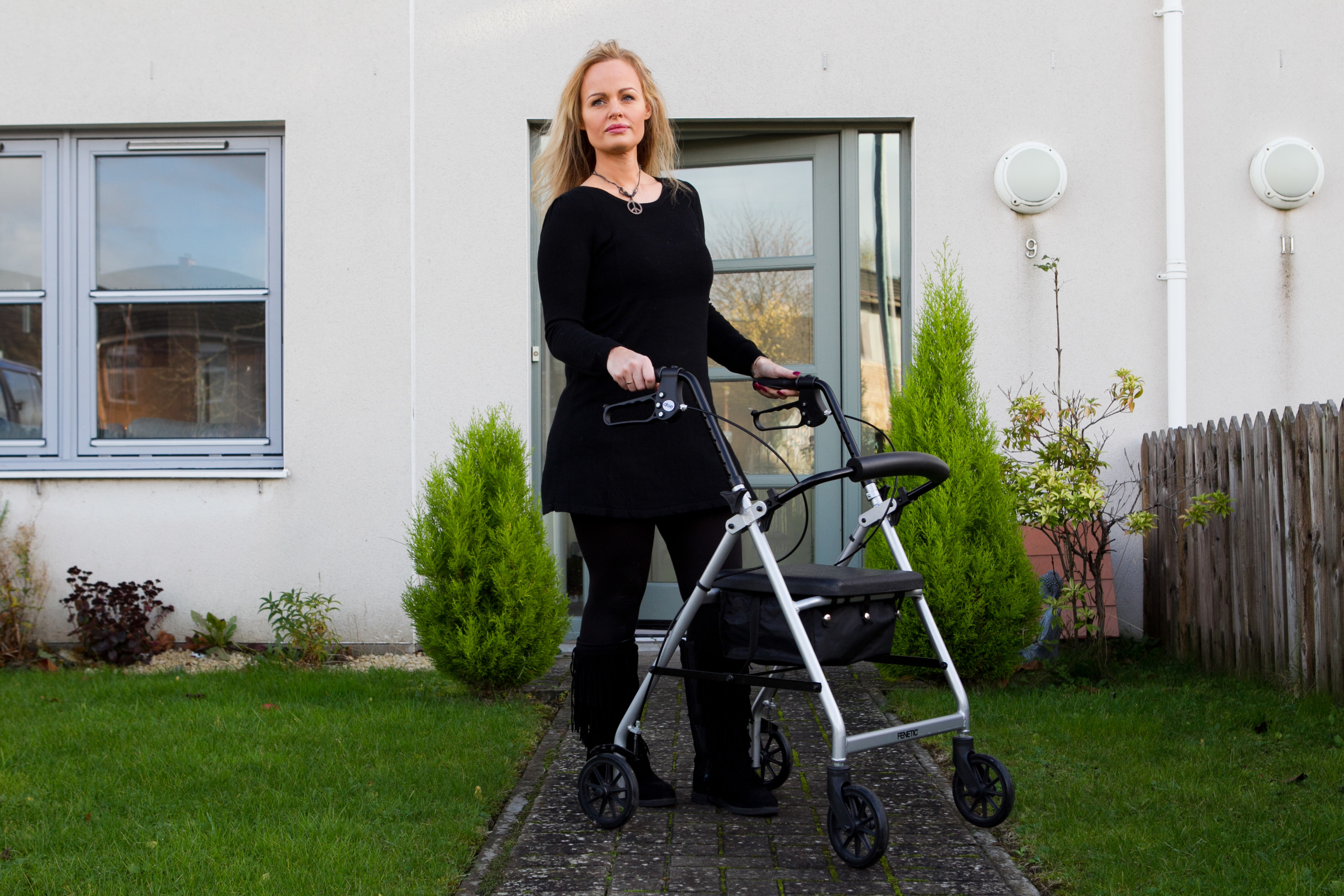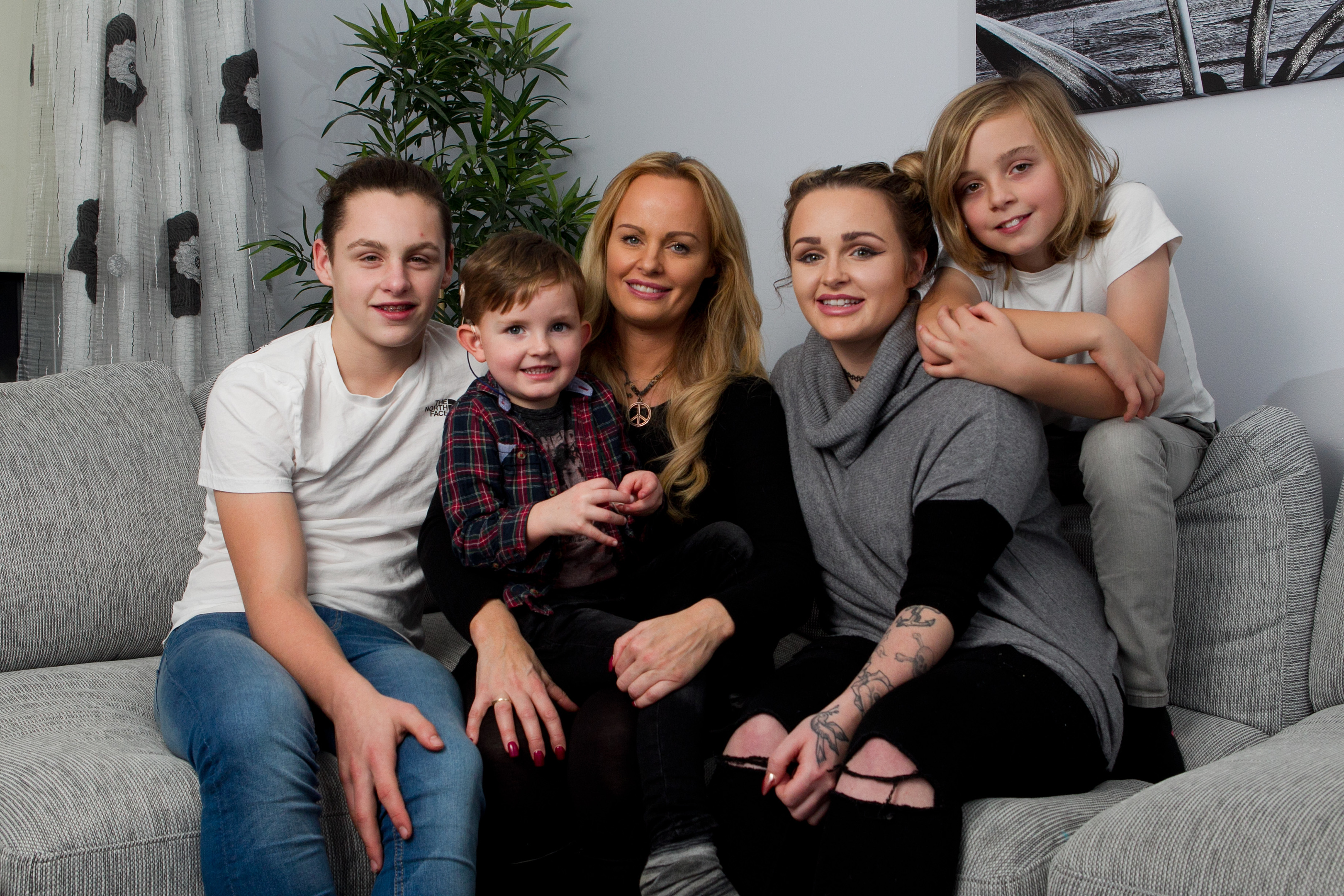
A FORMER personal trainer who used to run marathons “for fun” now has to use a stair lift after being floored by a one in 30 million illness.
Devastated Alison Laird can’t even lift a big carton of milk and has to rely on a walking frame to get around, all at the tender age of 42.
She can’t even pick up her grandson Lucas, four, to give him a cuddle anymore and people frequently think she’s drunk because her legs wobble so much.
It’s a far cry from her life as one of Scotland’s top personal trainers.
“I can’t even lift a big carton of milk now,” Alison told the Sunday Post. “And because my legs wobble, people assume I’m drunk, that’s why it’s important to me that people know about this.”
Alison made a living out of her passion for exercise.
For eight years, she inspired hundreds of clients to lose weight, sculpt muscles and increase their own energy levels and potential.
She ran numerous marathons and was well known for always being on the go.
Today the bubbly mum-of-three can’t even climb the stairs of her home in Bellshill, Lanarkshire, and has to use a stair lift instead.
But worst of all has been missing out on that all important cuddle time with Lucas – son of daughter Lauren, 23.
“My life is now very different and I don’t know how I’d cope without my wonderful kids,” said Alison, who is also mum to boys Jason, 14, and Dean, 11. But I can no longer pick Lucas up for a cuddle,” she said. “I just don’t have the strength.”
Alison has been floored by a genetic disorder so rare she had to wait seven years for a diagnosis.
GNE myopathy affects only a handful of people in the UK. It needs both the mother and father to pass on the mutated gene to their offspring, at odds of just one in 30 million.
“I had a much better chance of winning the lottery than getting this genetic disorder, yet it happened,” said Alison. “My mum and dad both had it, and unwittingly passed it on.
“It doesn’t develop until you’re well into adulthood, so you don’t know anything might go wrong.
“I’m a very positive person and once I’d come to terms with such life-changing disabilities, I decided I’d work for the greater good, and raise money for research in the UK.”
But first she had to mourn the loss and let go of the person she once was, and that was a difficult process.
A key moment saw her visit the beach at Ayr with Lucas, Jason and Dean last summer.
“It was a day trip to make memories while I could still walk on the sand,” she says.
The seaside trip was made just days after her diagnosis was confirmed.
Prior to that – life was good – and she hopes it will continue to be.
“I have three wonderful children and was bringing them up along with running my own career as a fitness instructor,” Alison adds.
“We’re a close-knit family and we always have a lot of fun.
“But, in my late twenties, I began to notice something
unusual. I was occasionally falling and tripping.
“But I put it down to clumsiness. I never hurt myself. I’d just bounce back up again.
“A few years later, I noticed that my foot wasn’t quite right. I didn’t have the same range of movement.
“Because I was training in the gym so much I was very aware of my body. I was also lifting a lot of weights and I loved the way weight lifting sculpted my muscles.
“I was very keen on becoming a body builder, but the weights I was lifting were getting lighter instead of heavier, and I was getting tired more easily.”
When she began to walk with a slight limp, she thought she’d trapped a nerve or injured her knee.
She said: “When someone stopped me and asked why I was limping I knew there was something more serious than trapped nerves or a gym injury.
“Then my foot dropped. I couldn’t flex it up but I could push it down.”
Alison was referred to a physiotherapist who sent her straight back to her GP to rule out the possibility of something more serious.
She said: “I had a body scan and needle prick tests at Glasgow’s Southern General Hospital which showed muscles shrinking, but with no explanation.
“I was tested for muscular dystrophy and one doctor thought I might have the onset of motor neurone disease which scared me stiff.
“My youngest son Dean was still very little and I didn’t want to die and leave them.”
Finally docs diagnosed GNE myopathy, seven years after her symptoms began.
She said: “It was a big relief, because even if I end up in a wheelchair, I’ll still be here.”
Remarkable, Alison is now using the same dedication that spurred her on in marathons to raise funds for research into the condition.
“Lauren’s doing a sky-dive to raise funds and we’re holding charity nights locally.”
“With better funding for research, they might find a cure. And that’s what keeps me going.”
To find out more about her fight go to http://bit.ly/AlisonsAbility.
READ MORE
Brave personal trainer on how she beat her bulimia
Diabetes diagnosis was a real surprise for gym-and-swim woman

Enjoy the convenience of having The Sunday Post delivered as a digital ePaper straight to your smartphone, tablet or computer.
Subscribe for only £5.49 a month and enjoy all the benefits of the printed paper as a digital replica.
Subscribe
